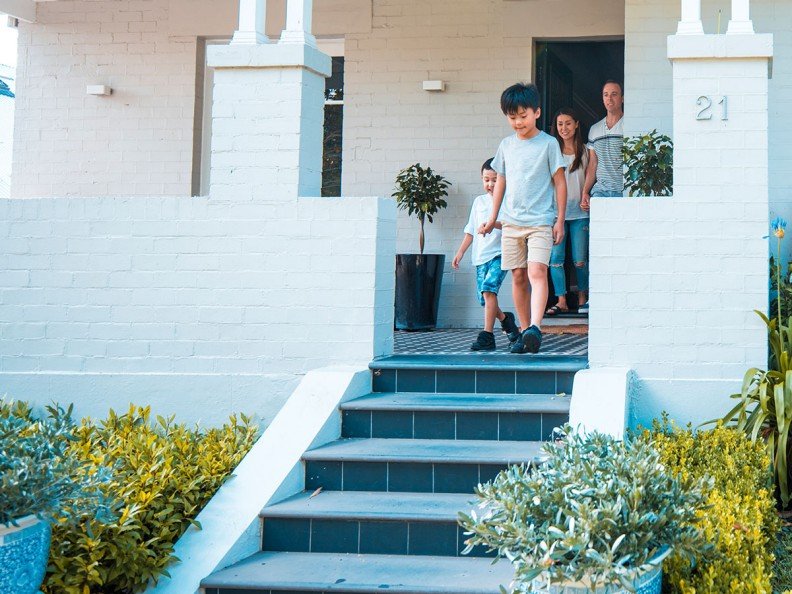What do rising rates mean for Australia’s property market?
What do rising rates mean for Australia’s property market?
BY MACQUARIE GROUP
219/05/2022
With the official cash rate on the rise, most Australian capital cities are seeing a slowdown in property growth rates. But some markets are seeing a sharper decline than others – and others are even experiencing re-acceleration.
Close to 300 business leaders joined Macquarie Business Banking’s National Real Estate Segment Head, Domonic Thompson, and CoreLogic’s Head of Australian Research, Eliza Owen, to discuss the year ahead during our second property update webinar for 2022.
A tale of multiple cities
Property growth rates across most capital cities have slowed right down, however conditions across the country certainly vary.
After a very strong, demand-driven market in 2021, Sydney saw its third consecutive month of decline in April, down 0.5%, while Melbourne’s dwelling values dropped 0.1%. The higher end of the market is leading the decline in both cities – aligning with historical data that suggests the top 25% of the market typically sees higher highs during an upswing and lower lows during a downswing.
“Reserve Bank of Australia (RBA) research shows that areas with higher values and higher investment concentrations are more sensitive to changes in the cash rate and credit availability. This is foreshadowing an eventual broader downturn for the market as a whole,” explained Eliza.
Smaller capital cities that benefitted from interstate migration, more affordable dwelling prices and the acceptance of remote work, have proven more resilient.
“Small capital cities, particularly Brisbane and Adelaide, are still seeing elevated growth rates,” Eliza explained. “But gradually we're starting to see those growth rates slow from around 8% at the end of 2021 to about 5% to 6% now.”
Most capital cities are seeing a slowdown in growth rates
Rental yields on the rise
Travel restrictions and a lack of international migration had a significant impact on the rental market across a number of capital cities. But as vacancy rates tightened over the course of 2021 to a multi-year low of 1.5%, rental growth began to pick up again – with the beginning of 2022 marking further recovery, particularly for units.
“What's really interesting in the unit segment is that the markets that were most impacted at the onset of COVID-19 – Sydney and Melbourne – are now leading unit rental growth,” said Eliza.
Quarterly growth in rent value across Melbourne units has been around 3.5%, double house rent growth in the same period. This trend is likely to continue due to additional demand from overseas migrants, who traditionally move first to Sydney and Melbourne.
Rental conditions remain diverse across the capital cities
As rental demand returns, record low gross yields are finally showing signs of rising – from 2.9% to 3% across the combined capitals. Sydney is leading the way in terms of growth, up nine basis points since the end of last year to a 2.5% return, while Melbourne is at 2.8%, up seven basis points.
“It’s been an extraordinary reversal of trends, which will probably encourage some investors back to the market,” Domonic said.
A lagging construction pipeline
Largely thanks to the Federal Government’s Home Builder Grant, development approvals have surged – particularly for detached housing. In February 2022, approvals of new apartments and houses increased at the fastest monthly rate on record, with total dwelling approvals rising 43% from January.1
“We've seen an extraordinary number of houses being built. Particularly if you look at states like Western Australia where, at the end of last year there were almost 20,000 detached houses under construction. That's virtually double the decade average,” Eliza said.
Approvals have transitioned to actual construction work
But there is a lag between approvals and construction that will likely linger due to significant increases in construction costs. The upswing in approvals, along with supply chain issues, has led to a 9% increase in construction costs over the 12 months to March 2022.
While this upswing in construction has been mainly owner-occupier-led, there’s a resurgence of investor activity now.
“The investor value of lending over the March quarter grew by 11% and was the fastest rate of growth in mortgage lending of any of the buyer segments.”
As demand for supply increases and gross rental yields grow, there will potentially be a pivot back to apartment development, according to Eliza.
This will add to the pipeline of lots under management for strata firms, and provide additional investment opportunities for professionals seeking to diversify their property portfolios given the potential yield upside.
Potential downturn scenarios
Data over the last 20 years shows upward cash rate movements put downward pressure on price growth. The RBA is expecting around a 15% decline in national property prices if the cash rate rises 200 basis points.2
“But what does that actually mean for Australia's housing market? It's probably not all doom and gloom,” Eliza suggested. “A 10% fall would take us back to price levels of mid-2021, while a 20% drop would be at a level similar to January 2021.”
This means a 20% fall in dwelling prices may only impact recent buyers, potentially putting some into a negative equity position. This only becomes a problem if there are concerns around serviceability.
Potential housing market decline scenarios
“If house prices fall, but people can still pay their mortgage, they just won’t try to sell that home while the market is in a downturn. So we would expect to see fewer listings and sales as a result,” Domonic explained.
While there is no doubt some borrowers will be affected, a strong labour market, rising wages, and accumulated savings over the pandemic, are all expected to bolster serviceability in 2023.
